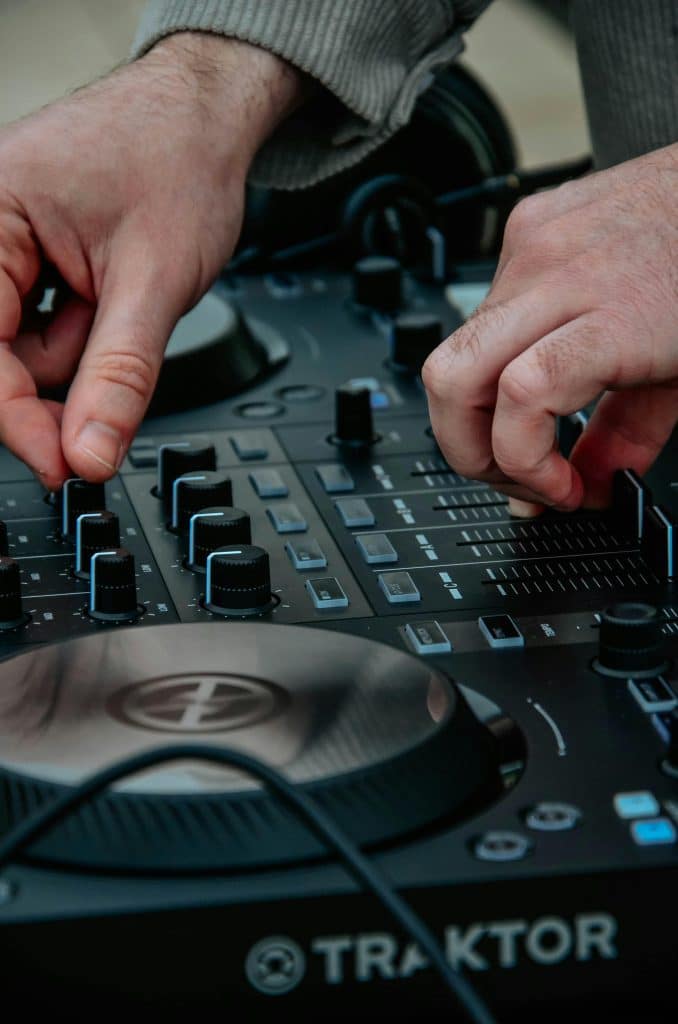
-
Traktor is especially strong in flexibility, modular setups, deep effects, remix decks, and stems support, giving you a lot of creative room. Wikipedia+2Digital DJ Tips+2
-
VirtualDJ is extremely compatible (claiming support for “almost every controller on the market”) and very user-friendly for beginners, with strong features like video mixing, broadcast integration, and broad hardware support. VirtualDJ Website
Because these platforms aren’t always in the mainstream “DJ controller hype cycle,” many beginners overlook them — but that can be a missed opportunity.
Let’s dig into what controllers suit them best, brand by brand, and what trade-offs to expect.
🧩 Native Instruments / Traktor Kontrol — the Official Route
If you want the most seamless experience with Traktor, going with the official hardware often gives you the tightest integration. Native Instruments designs their controllers to speak “Traktor fluently,” minimizing mapping work and maximizing performance features.
Key models & positioning
Let me highlight a few standout Traktor Kontrol units:
-
Traktor Kontrol S2 MK3 — a 2-channel controller with built-in audio interface. Great as an entry “complete controller” for Traktor users.
See more details here: https://amzn.to/476DdtS -
Traktor Kontrol S3 — steps up to 4 channels and gives more room to grow.See details here: https://amzn.to/3IXAwmA
-
Traktor X1 MK3 — more of a module / effects / remix controller rather than full decks. Useful for supplementing another controller or mixer.
Check out what it can do here: https://amzn.to/4718f6s -
Traktor Kontrol S4 MK3 — a flagship-style 4-channel model with motorized jog wheels, deep integration, and pro-level features.
-
Traktor Kontrol Z1 MK2 — more mixer-style or compact desk option, useful if you already have other control over decks.
Pros
-
Zero or minimal setup — they come ready to work with Traktor (software, mapping, effects)
-
All controls (knobs, buttons, pads) map intuitively to Traktor’s features
-
Often features like motorized jog, haptic feedback, LED rings, displays built with Traktor in mind (e.g. S4’s motorized jog wheels and displays) native-instruments.com
-
Deep support for advanced Traktor tools (stems, remix decks, effects layering)
Cons / things to watch out for
-
Premium prices for high-end models
-
The extra features (4 channels, motor wheels, etc.) may be overwhelming for absolute novices
-
Native models tend to stay focused on Traktor — less flexibility (though many can be MIDI-mapped to other software)
-
Because Traktor is a niche versus Pioneer/Serato in many markets, parts / second-hand market may be smaller
🔁 Controllers for VirtualDJ & Flexible / Budget Options
One of VirtualDJ’s strengths is that it supports a wide variety of controllers — from premium to low-cost — often with existing mappings or plug-and-play support. That means even budget or “lesser-known” brands can perform very well under VirtualDJ (and in many cases under Traktor too, with some mapping).
Here are some good options:
-
Numark Party Mix II — a budget 2-channel controller that works well with VirtualDJ.
Get one here for just £102.95 : https://amzn.to/3VZQShp -
Numark Party Mix — very basic, good for testing the waters with minimal investment.
-
Ion DJ Live 2 — very low-end option; use with caution but useful for home practice setups.
-
Reloop & Gemini
• Reloop has controllers like the Digital Jockey series, which are listed on VirtualDJ’s hardware compatibility pages. VirtualDJ Website
See a Mixon 8 Pro Here: https://amzn.to/43jJgKv
• Gemini controllers (for instance, the Gemini CNTRL-2) are noted on VirtualDJ's hardware pages as compatible units. VirtualDJ Website
Advantages of these
-
Much lower cost — you can get started without a huge financial commitment
-
Flexible — many are “MIDI class” so they can work across different software (VirtualDJ, Traktor, Serato)
-
Great for practice, home setups, small gigs
Limitations / trade-offs
-
Build quality, jog wheel responsiveness, and long-term durability may suffer
-
Fewer “extras” — maybe fewer effects knobs, weaker audio interface, less isolation on outputs
-
Some mapping work might be needed to make advanced features work in Traktor
-
As you grow, you'll likely want to upgrade
🛠 Choosing a Controller When You Use Traktor or VirtualDJ
Here are some guidelines to help a new DJ decide:
| Criterion | What to Aim For | Why It’s Important |
|---|---|---|
| Native integration | Pick controllers built for your software (Traktor Kontrol for Traktor) | Saves time, mapping headaches, and ensures everything “just works” |
| Channel count | 2 channels are fine to start; 4 channels for future flexibility | Many gigs or sets will never need more than 2, but 4 gives growth room |
| Jog wheel & control feel | Good torque, responsive, accurate | You’ll use this for cueing, nudging, scratching |
| Audio interface quality | Clean output, low noise, proper headphone / booth routing | Poor interface diminishes your mix sound |
| Replaceable / modular parts | Swappable faders, knobs, pads | Controllers wear out — cheaper ones often become irreparable |
| Support / community | Check forums, tutorials, mappings | Especially with Traktor or VirtualDJ, community mappings help |
| Budget vs stretch features | Don’t overpay for features you won’t use yet | Focus on essentials; extra features are bonuses |
🧠 Final Thoughts: What Makes Sense for Beginners?
-
If you're planning to use Traktor long term, going with a Traktor Kontrol controller makes a lot of sense — it gives you confidence it’ll “just work,” and gives you space to grow.
-
If your budget is tight, or you want flexibility across software, a VirtualDJ-compatible MIDI controller from a brand like Reloop, Gemini, or Numark is a smart route. You may lose a little polish, but you’ll get functional control.
-
Don’t overcomplicate — better to start mixing, learning beatmatching, building experience than constantly hunting for the “perfect controller.”
-
As your proficiency grows, you can always upgrade parts or step into a higher-tier controller that combines the best of both worlds.
